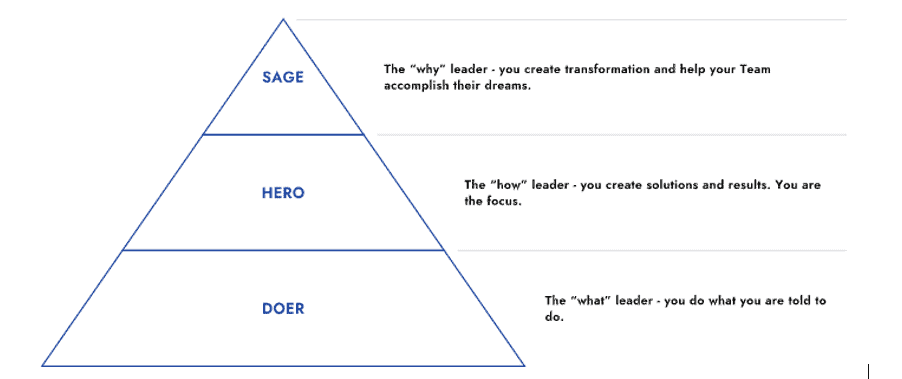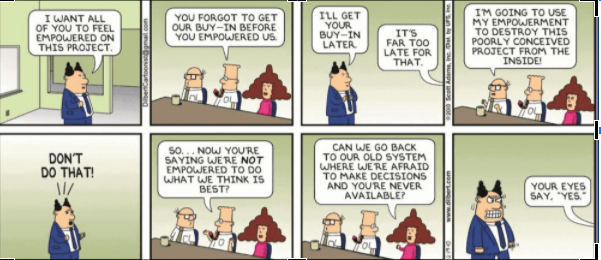Your Team: How to Harness the Potential to Transform
Your leadership style can accelerate your organization’s innovation and your Team’s Autonomy.

I want to ask you three questions.
- Who is your favorite leader, and why?
- What kind of leader did you aspire to be before becoming one?
- What kind of leader are you now?
I’m assuming that many of you wanted to be the kind of leader who inspired your Team to willingly give their best to your organization. You probably don’t want to be a fire-breathing leader that micromanages every little nuance.
According to the chart below, many of us aspire to be the “Sage” leader–the one who creates transformation and helps our Team to accomplish their dreams. To do this, we need to share the “why” with our Team.

It is no easy feat to cross the line between “Hero” and “Sage.” Many leaders are perfectly happy in the “Hero” role and have little ambition to move into “Sage.” Being the hero is seductive. People look to you for answers and solutions, which can actually slow down your business’s progress because it creates a sense of dependency. This “Hero” designation is fine if you are ok with the status quo, steady turnover, and employees who come to work to simply receive a paycheck. The “Hero” leaders run out of “how” when things become too complex. They give people agency to solve problems and innovate at the lowest levels possible.
On the other hand, there are those special organizations that create Teams with high autonomy. Only “why” leaders can handle complexity. “Sage” leaders aren’t afraid to shed their tough exterior shell, admit that the sum of its parts is greater than the whole, and explain the “why” so that their Team thrives in a complex world through autonomy and innovation. Everyone has the “roll up the sleeves” mentality. Not only does the job get done, but it’s more impactful than before.
Action Steps to become a “Sage” leader:
- Take the Lead Well program: This program illustrates the six habits you need to become a “Why/Sage” leader. Click here to download the one-pager. Are you a good fit for this program? Apply Here! The next program starts in June.
- Understand and Execute the “Lobster Principle:” Lobsters are animals that never stop growing. However, they need to shed their skin and be vulnerable for brief periods to move forward with their growth. Like lobsters, leaders need to shed their tough exterior once in a while to grow. Vulnerability means that you don’t always have the answers and that you’re willing to lean on your Team. It shows that you value them and their input, creating more buy-in and belonging.
- Get to know your Team: You can’t become a transformational leader without getting to know your team. This takes time and energy, and it always pays off. It coincides with the “teach your Team to fish” analogy; the upfront time will pay off in the end. A “Manager” will give their Team a fish and feed them for a day. The “Sage” will teach their team to fish and feed them for a lifetime. Knowing your Team’s dreams and aspirations will help you create those meaningful transformations in their lives.
- Practice sharing the “why” and then let go: This is a scary thing to do for the first time. There will be hurdles, pitfalls, and errors and that’s ok. Learn from the mishaps and keep handing over the reins. Eventually, your Team will gain a greater sense of agency, become more intuitive, and learn to ask the right questions to better guide their decision-making. Before you know it, your business sustainability will bolster, and the magic will happen in spite of you, not because of you.














